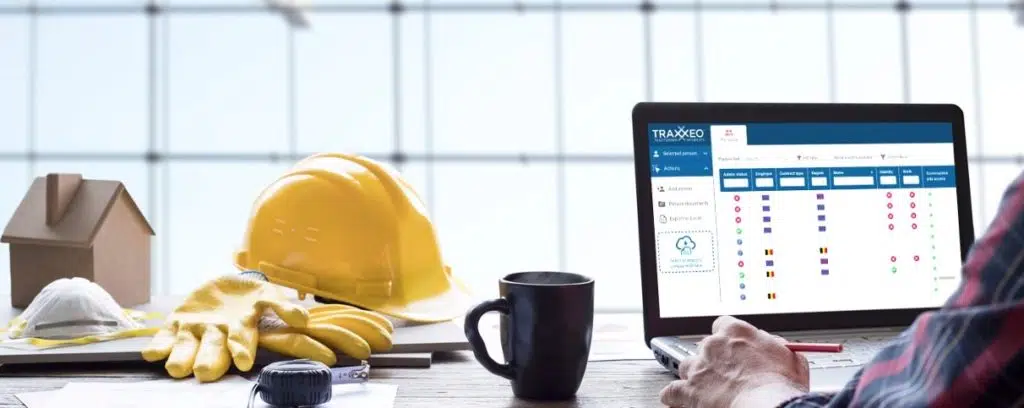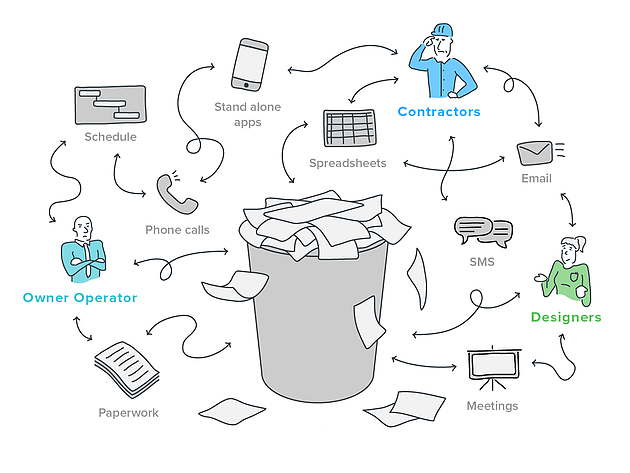Efficient Construction Document Management Solutions for Every Task
Efficient Construction Document Management Solutions for Every Task
Blog Article
Optimizing Task Cooperation: Architect's Finest Practices in Building And Construction Record Monitoring
In the intricate realm of architectural jobs, the effective administration of building and construction documents stands as a keystone for success. Amidst this complexity exists a crucial concern: exactly how can designers streamline partnership processes to improve task end results?
Leveraging Cloud-Based Systems
Leveraging cloud-based platforms is an essential approach for contemporary engineers in enhancing construction record administration procedures. By transitioning from traditional paper-based systems to cloud remedies, designers can simplify collaboration, improve record ease of access, and boost general task effectiveness. Cloud-based platforms provide engineers the capacity to shop, share, and upgrade building records in real-time, making certain that all staff member have access to one of the most existing information despite their location. This ease of access advertises smooth interaction and control amongst project stakeholders, causing fewer errors and hold-ups in the construction process.
In addition, cloud-based systems give a protected environment for storing delicate job info, using file encryption, regular backups, and user approval setups to shield information stability. Designers can additionally take advantage of the scalability of cloud remedies, allowing them to readjust storage capacity and performance based upon job demands. In general, leveraging cloud-based systems encourages designers to optimize their building document management procedures, driving better cooperation, efficiency, and success in their tasks.
Carrying Out Version Control Solution
Having developed the benefits of cloud-based systems in building and construction paper monitoring, designers can currently enhance their paper control processes by applying Variation Control Equipment. Variation Control Equipment (VCS) are necessary devices that track modifications in papers, ensuring that group members are constantly dealing with the newest and most accurate info. By applying VCS, architects can maintain a central repository where all project documents are saved, making it possible for smooth collaboration while reducing the risk of errors and variation disputes.
One trick benefit of Variation Control Equipment is the capability to track the total history of document modifications, allowing users to return to previous variations if required (construction document management). This attribute is particularly beneficial in building and construction projects where layout iterations and adjustments are typical. Moreover, VCS promotes better interaction among team members by providing a clear audit path of who made details adjustments and when they were made. This openness not only improves accountability yet likewise helps in fixing conflicts or discrepancies that might occur during the task lifecycle.
Establishing Communication Methods
To make sure reliable and efficient job control, architects must establish clear and durable communication procedures within their construction paper monitoring processes. Interaction methods define the approaches, frequency, and channels via which employee exchange details, updates, and feedback. One essential aspect of establishing these protocols is establishing a centralized communication system where all project-related conversations and document sharing can occur. This platform can be a project administration software program, e-mail strings, or cloud-based storage services. By establishing standards on how info is distributed and just how staff member communicate with each other, designers can enhance the circulation of information and prevent miscommunications or delays in the building procedure.
Moreover, communication procedures ought to likewise include guidelines on how to handle conflicts, adjustment orders, and immediate issues that might arise throughout the job lifecycle. Developing a structured method to communication ensures that all stakeholders get on the very same web page, promotes transparency, and ultimately adds to the effective completion of the building project.
Making Use Of BIM Software Program for Sychronisation
BIM software plays an essential function in enhancing control amongst project staff member in the look at this now building industry. Structure Info Modeling (BIM) assists in collaboration by providing a central platform where engineers, designers, specialists, and other stakeholders can interact in a collaborated manner. With BIM software, task participants can access and upgrade a shared version that consists of detailed information about the structure design, building components, and job schedules.

Additionally, BIM software makes it possible for real-time partnership and interaction among employee, regardless of their physical location. Through cloud-based BIM platforms, task stakeholders can access the current job information, track changes, address and make notified decisions promptly. Overall, leveraging BIM software program for sychronisation enhances task effectiveness, performance, and eventually results in effective job outcomes.
Ensuring Data Safety and Compliance
In the world of building record administration, safeguarding information integrity and ensuring governing compliance are extremely important considerations for engineers and other job stakeholders. Architects need to implement robust protection steps to secure delicate task details from unapproved access or breaches. Using secure cloud storage space services with file encryption protocols and accessibility controls can assist minimize risks linked with information theft or loss. Frequently upgrading software application and systems, performing security audits, and supplying team training on information safety and security finest techniques are vital actions in maintaining a protected atmosphere for building record monitoring.

Verdict
To conclude, architects can maximize project cooperation in building and construction file monitoring by leveraging cloud-based platforms, applying version control systems, developing communication procedures, utilizing BIM software application for coordination, and guaranteeing information safety and security and conformity. These best methods aid improve the building and construction process, enhance interaction among project stakeholders, and boost efficiency in job distribution. By following these standards, engineers can effectively handle building and construction documents and help with effective project outcomes.
With BIM software program, project participants can access and upgrade a common version that contains in-depth info about the building style, building and construction parts, and project schedules.
With cloud-based BIM systems, job stakeholders can access the most recent task information, track modifications, and make notified choices without delay - construction document management. Overall, leveraging BIM software for coordination improves project effectiveness, efficiency, and eventually leads to successful job results
In verdict, engineers can optimize task collaboration in construction record management by leveraging cloud-based systems, implementing variation control systems, developing interaction procedures, using BIM software for coordination, and ensuring information protection and conformity. These best practices help simplify the building and construction procedure, enhance communication amongst job stakeholders, and improve efficiency in task distribution.
Report this page